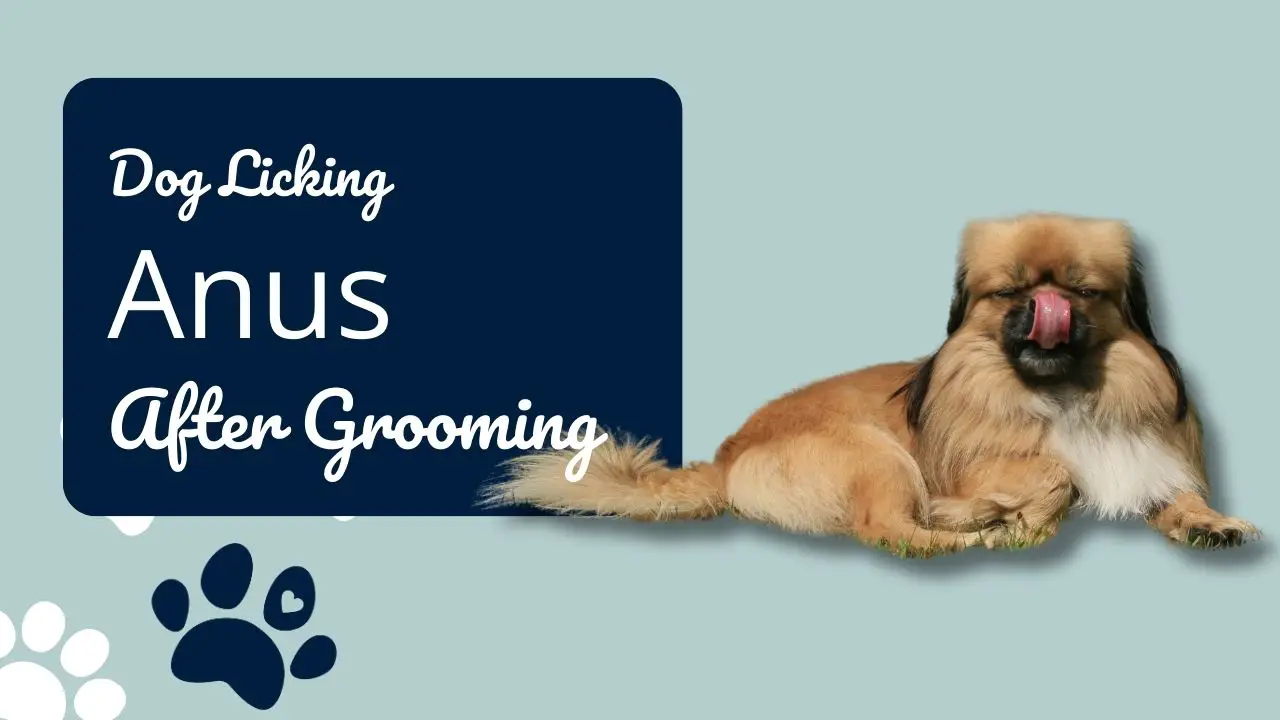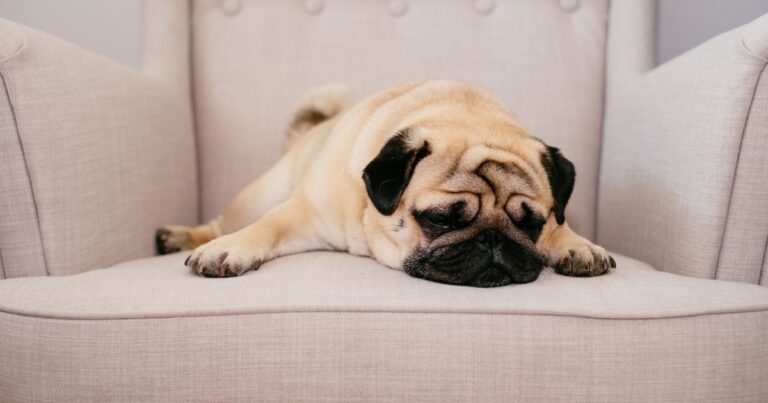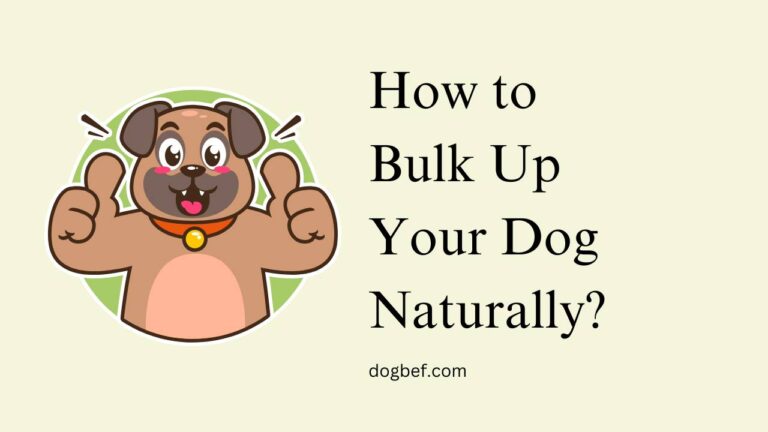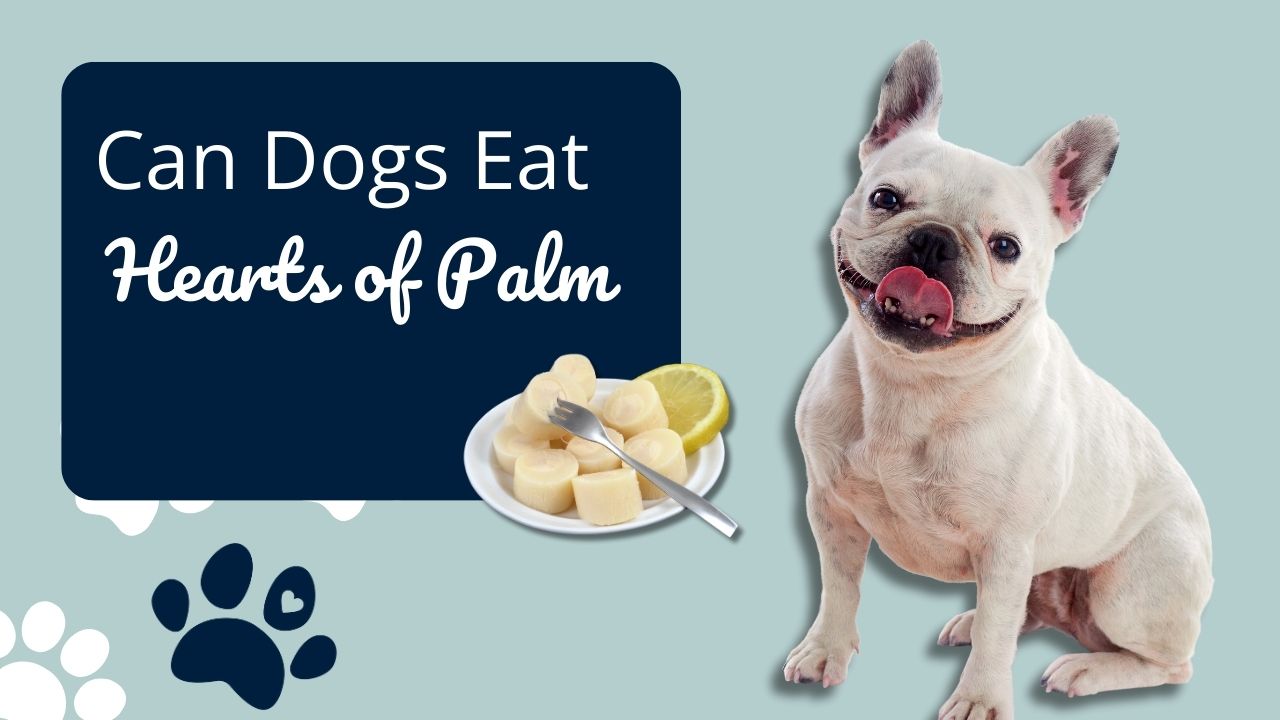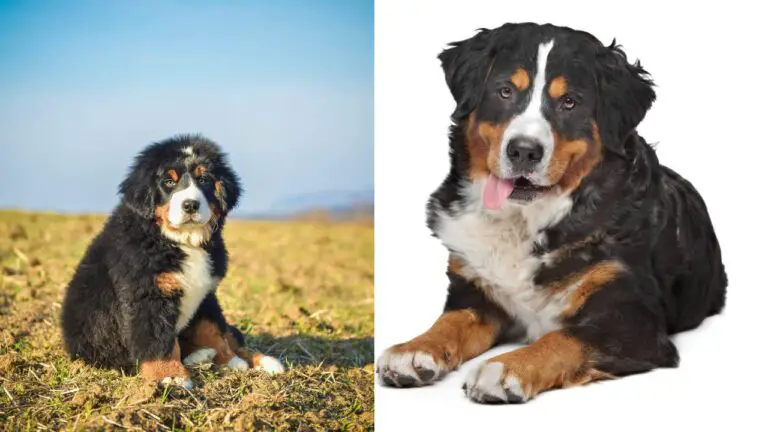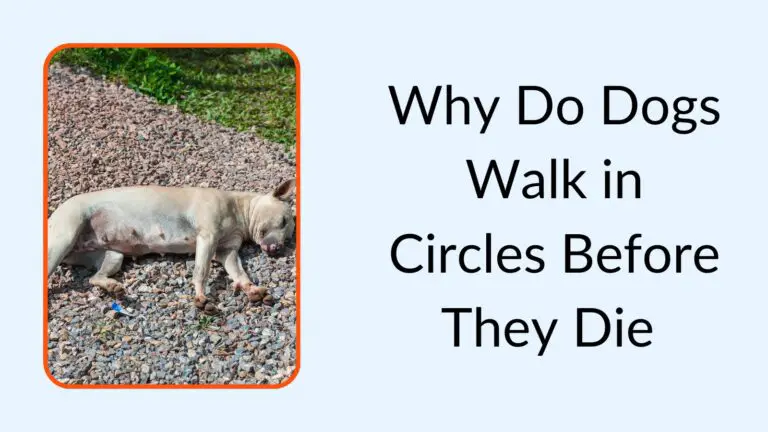For dog owners, grooming is an important part of keeping our furry friends clean, healthy, and comfortable. Brushing, bathing, nail trimming, and other grooming tasks are routine parts of life with a dog. However, some pet parents may notice an odd behavior after grooming – their freshly bathed and coiffed canine returning to lick at their bottom. This post-grooming anus licking may seem peculiar, but there are several possible explanations for why dogs feel compelled to lick their behinds after a spruce-up.
This behavior could be an indication of discomfort, irritation, or incomplete grooming. Dogs may lick areas that were shaved too close or still have soap residue. Anal gland issues, yeast infections, fecal build-up, parasites, allergies, and growths are other potential medical causes for excessive licking that warrant a veterinary visit. Sometimes, licking is simply a self-soothing habit. As dog owners, understanding common canine behaviors like post-grooming licking helps us ensure our pets are happy and healthy.
Reasons why your dog keeps licking anus after grooming
There are serval reasons why your dog may linking anus caused by the grooming process.
I. Discomfort or Irritation: The Root Cause
Discomfort or irritation is often the root cause of a dog’s post-grooming licking. The grooming process itself may induce discomfort in a few key ways. First, grooming inevitably involves touching and manipulating areas of the dog’s body not typically handled daily. This unfamiliar sensation of being brushed, bathed, clipped, and styled can cause stress and irritation for some dogs.
Areas like the rear, tail, and anus are especially sensitive. Furthermore, the tools involved in grooming may provoke irritation. Clippers and scissors can cause razor burn, nicks, and ingrown hairs if used carelessly around delicate regions like the anus. Dogs may excessively lick these irritated spots.
Dogs with sensitive skin may develop allergic reactions to grooming products like shampoos, conditioners, and sprays. Ingredients, fragrances, and chemicals in these formulas can trigger discomfort, itching, and redness – leading to obsessive licking post-grooming. Understanding if and how grooming prompts discomfort for a dog is key to curbing the licking cycle.
II. Anal Gland Issues: Behind the Scooting Mystery
A dog’s anal glands are small sacs on either side of the anus that fill with a unique fluid secretion. Normally, these anal gland secretions are expelled when a dog has a bowel movement. However, sometimes the glands do not empty properly, becoming impacted or infected. This can cause discomfort, inflammation, and the urge to excessively lick the area.
Anal gland problems may arise or worsen after grooming if the grooming process puts pressure on clogged glands or irritates already impacted glands. Signs of anal gland issues include scooting, licking under the tail, and obvious pain or swelling around the anus.
If these symptoms arise after grooming, a veterinarian should examine the dog’s anal glands. They can manually express clogged glands and provide medication if needed to resolve infection or inflammation. Properly addressing anal gland problems will eliminate the discomfort driving post-grooming anus licking.
III. Yeast Infection: Unseen Culprit of Post-Grooming Anus Licking
Yeast infections in the moist, warm environment around a dog’s anus and genitals can also prompt post-grooming licking. The bathing and drying process of grooming leaves behind increased moisture. Coupled with the naturally warm temperature in the rear area, this creates ideal conditions for yeast like Candida to thrive. An overgrowth leads to itchy, irritated skin and secondary bacterial or fungal infections.
Signs of a yeast infection include redness, swelling, foul odor, and thick discharge around the anus. Excessive licking is an instinctive reaction to the discomfort. Treatment typically includes oral and topical antifungal medication from a vet. While grooming is important, pet owners should be mindful of avoiding excessive bathing that could worsen yeast flare-ups. Finding the right balance is key to managing yeast and stopping the cycle of post-grooming licking.
IV. Parasitic Infestation: Tackling Tapeworms and Itching
Tapeworms and other intestinal parasites can lead to irritation and itching around the anus that prompts dogs to lick themselves after grooming. Tapeworms will shed rice-like proglottid segments around the rear area that may go unnoticed during the bathing process. These segments as well as burrowing parasite larvae cause inflammation and discomfort. Excessive licking is an attempt to alleviate the itchiness.
Owners may find tapeworm segments in the dog’s feces or fur. Deworming medication from a veterinarian is needed to kill the parasites. Powerful prescription products like praziquantel are most effective at fully eliminating an infestation. Even after grooming, owners should watch for continued licking as a sign that follow-up treatments may be needed to address any lingering parasites irritating the dog’s bottom.
V. Allergic Reactions: Flea Allergy and Itching Remedies
Allergic reactions to things like flea bites and certain foods can create itchiness and inflammation that leads to anus licking after grooming. Flea allergy dermatitis is a common culprit. Even a few flea bites can trigger significant allergic irritation and redness around the tail and rear area on sensitive dogs.
Grooming may temporarily relieve itching, but the irritation soon returns prompting recurrent licking. Anti-itch remedies like short-term Benadryl can help reduce allergic flare-ups. However, addressing the root allergens like fleas is key. Veterinarians can provide prescription flea control products and medications to target the underlying cause of the itch-lick cycle stemming from allergies.
VI. Perianal Adenoma: The Potential Growth Factor
Perianal adenomas are benign tumors that can develop around a dog’s anus and cause discomfort and itching. These growths arise from glandular tissue near the rectum. They may become irritated during grooming, leading to post-bath licking. Owners may notice the fleshy masses when cleaning the dog’s rear.
Diagnosis is confirmed through visual exam, biopsy, and histopathology to differentiate adenomas from more serious perianal tumors. Though typically benign, these growths can impact quality of life if they become large, ulcerated, or infected. Surgical removal fully resolves discomfort and stops any licking behavior. While not a common issue, owners should be aware of perianal adenomas as a potential cause of persistent licking after grooming.
VII. Fecal Matter Buildup: A Hidden Cause of Canine Discomfort
Fecal matter and debris stuck around the anus is another hidden culprit that can prompt post-grooming licking. Even after a bath, bits of poop, dirt, or dingleberries can get trapped in the folds and fur surrounding a dog’s rear. This irritates the sensitive skin and triggers a dog’s instinct to lick the area clean. While grooming includes washing the rear, the vigorous scrubbing needed to fully dislodge stuck fecal debris may be difficult or too harsh.
As a result, some buildup remains post-grooming. Adding canned pumpkin to a dog’s diet can help express anal glands and allow for easier bowel movements that leave less remnants around the anus. This reduces the irritation of driving licking. However, severe cases may require a vet visit to manually express clogged anal glands blocked by significant fecal buildup. Keeping the rear clean before and after grooming is key.
An optimal diet supports healthy bowel movements and reduces debris sticking to the anus area.
VIII. Incomplete Grooming: A Groomer’s Oversight
Incomplete grooming by a professional pet stylist can also prompt a dog to lick their bottom after a session. Even the most skilled groomer may accidentally miss spots around the rear and tail area when shaving, washing, or drying a wiggly or difficult dog. These missed patches may still have fecal residue, dirt, tangles, or soap left over from otherwise thorough grooming. The dog can likely sense these remnants and will lick the area in an instinctive effort to further clean themselves.
Excessive licking of the same spots can develop into a habit even after the initial debris is gone. This highlights the importance of clear communication between pet owners and groomers to ensure the groomer understands and can properly wash, brush, and dry all sensitive areas like the tail and anus region. Dog parents should inspect groomed dogs when picked up and notify the groomer of any consistently missed spots that may need additional attention next visit.
Soothing Your Pup’s Bum: A Comprehensive Guide to Post-Grooming Care
I. Signs of Infection: Detecting Red Flags
Visually inspect the area around your dog’s anus after grooming for any swelling, redness, discharge, or bleeding which could indicate infection.
Behavioral signs of discomfort include excessive licking, scooting, whining, or biting at the area. Your dog may also frequently attempt to sit down and then immediately stand back up. Excessive licking can be a behavioral issue needing training and management.
If visual symptoms of infection are present or your dog is demonstrating behavioral cues of significant discomfort or pain, contact your veterinarian right away for an urgent examination. Infections left untreated can worsen.
II. The Warm Compress: A Comforting Touch for Post-Grooming Woes.
A warm compress applied to the irritated area can increase blood flow, relax muscle spasms, and soothe painful skin. The warmth provides therapeutic benefits.
Soak a clean washcloth in warm water, wring out excess liquid, and apply to the affected area for 5-10 minutes, 2-3 times per day after grooming. Ensure the water is at a comfortably warm temperature.
Establishing a routine warm compress regimen can provide consistent relief and comfort after each grooming session.
III. Gentle Cleansing: Maintaining Anus Hygiene
Use a soft cotton cloth dampened with warm water and the mildest soap to gently cleanse the area around the anus. Avoid scrubbing and pat dry.
Opt for fragrance-free cleansers formulated for sensitive skin. Many brands make washes, especially for dog anal gland areas.
Practice gentle hygiene to keep the area clean but never rub excessively or irritate the already inflamed skin.
IV. Medicated Ointment: Targeted Relief
Consult your veterinarian on over-the-counter or prescription medicated ointments to help soothe and heal irritated anal tissue.
Apply a thin layer of the medicated ointment gently to the affected area 1-2 times per day after thoroughly cleansing and drying the skin.
Consistent and proper use of a medicated ointment can provide lasting relief by targeting healing to the irritated tissues.
V. Anti-Inflammatory Products: Balancing Soothing and Caution
Steroids and antihistamines can aid recovery by reducing inflammation and associated discomfort and itching. However, misuse can have side effects.
Carefully follow all veterinary recommendations regarding anti-inflammatory dosages, types, and treatment duration. Seek professional guidance.
Monitor your dog closely throughout treatment and report any changes to the vet so anti-inflammatory regimens can be adjusted as needed.
VI. Behavior Monitoring: Connecting with Your Dog’s Signals
Observe your dog’s behaviors closely after grooming. Make note of any concerning changes from their normal routine and temperament.
Recognize signs of discomfort like listlessness, whining & anxiousness, aggression, muscle stiffness, tension, or attempts to bite or lick excessively at the area.
Contact your veterinarian promptly if behavioral shifts signaling pain and distress persist more than 24 hours after grooming. Do not delay seeking advice.
Learn more about understanding puppy behavior and find out what to do if your dog keeps licking its anus after grooming.
VII. Consulting a Vet: Professional Guidance for Lasting Solutions
A veterinarian has the expertise to fully diagnose the cause and craft tailored treatment plans that resolve the issue long-term. Their guidance is invaluable.
Through physical exams, lab tests, and diagnostic imaging, your vet can pinpoint any medical factors driving your dog’s post-grooming discomfort.
Treatment plans may include medication, therapeutic baths, dietary changes, gland expression, or surgical removal of problematic glands or growths. Follow all vet recommendations closely for optimal recovery.
Conclusion: Empowering Pet Owners in the Canine Licking Odyssey
Grooming is an indispensable part of caring for our canine companions. However, some dogs exhibit the peculiar habit of excessively licking their anus after bathing and grooming sessions. This seemingly eccentric behavior can stem from a variety of causes, including skin irritation, incomplete grooming, anal gland issues, allergies, and other medical conditions.
By understanding the potential reasons behind post-grooming anus licking, owners can take steps to minimize discomfort for their dogs. Using gentle products, proper hygiene, warm compresses, medication, and veterinary care can help create a soothing post-grooming regimen. Knowledge empowers owners to make thoughtful choices when grooming and caring for their pets.
While excessive licking warrants attention, each dog has unique quirks and habits. Working with your veterinarian to rule out underlying illness, have patience with your dog’s harmless eccentric behaviors. Channel your compassion and use their licking tendencies as an opportunity to strengthen your loving bond through care and comfort. With a thoughtful, informed approach, the post-grooming licking odyssey can nurture a deeper connection between pets and their owners.
FAQs about Dog Licking Around His Anus
Why does my dog keep licking his anus after grooming?
The most common reasons dogs excessively lick their anus after grooming include skin irritation, discomfort from the grooming process itself, anal gland impaction or infection, parasites, residual debris stuck around the anus, allergic reactions, or other medical issues involving the rear area.
Is it normal for my dog to lick excessively after grooming?
It’s common for dogs to do some general grooming licking after a bath, but excessive, focused licking on one area like the anus is abnormal and may signal an underlying problem needing veterinary attention.
Should I be concerned if my dog keeps licking his anus after grooming?
Yes, persistent anus licking after grooming sessions warrants concern. It likely indicates discomfort, itching, or another medical issue driving the behavior. Contact your vet if the licking continues unabated.
Can grooming products cause skin irritation leading to anus licking?
Definitely – shampoos, conditioners, fragrances, and chemicals in grooming products can cause skin irritation or allergic reactions, prompting excessive licking. Use gentle, hypoallergenic products.
How can I differentiate between normal grooming and excessive dog licking behavior?
Brief, occasional licking is normal. But prolonged, obsessive licking focused on one area like the anus signals a problem. Duration and frequency are key factors.
Are there specific signs of anal sac problems in dogs?
The dog is Scooting, licking under the tail, sensitivity around the anus, and foul odors can indicate impacted or infected anal glands requiring veterinary treatment.
Can bowel movement issues contribute to my dog’s anus licking behavior?
Yes, constipation or diarrhea can lead to greater debris around the anus and discomfort, prompting increased licking after grooming.
How can I relieve itching in my dog after grooming?
Identify the cause first. Warm compresses, gentle cleansing, hypoallergenic ointments, and anti-inflammatories as prescribed by your vet can provide relief. A soothing bed may help ease post-grooming irritation.
Is there a connection between a dog’s diet and anal gland issues?
Yes, improper diet causing very soft stools makes it difficult for the anal glands to express normally during bowel movements. Consult your vet on an optimal diet.
Why Is My Puppy Not Eating or Sleeping a Lot?
Is My Male Dog Affected by My Period?
Why Do Dogs Walk in Circles Before They Die
Should I Buy a Puppy With An Umbilical Hernia
Resources Links

